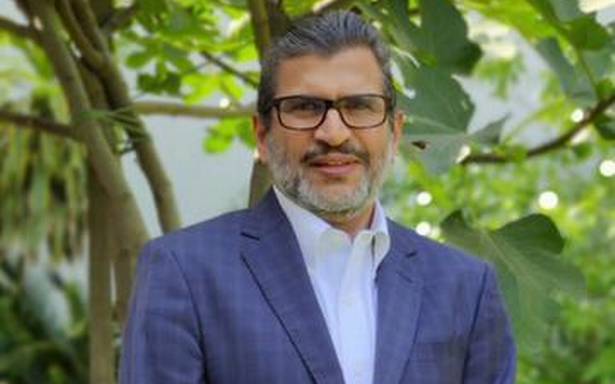Geographic Information System (GIS) and geospatial technologies are playing a critical role in aiding economic growth and dealing with disasters, says Agendra Kumar,MD, Esri India, a leading player in this field. Excerpts:
Why is GIS technology important?
Because it provides us a framework for a better world in dealing with a lot of challenges of climate change, poverty and shortage of natural resources. Through GIS, we can understand the current situation and what changes are taking place and what actions should be taken and the impact of those actions.
What type of services are you providing and who are your major clients?
We are a GIS software company. We work with clients like national mapping agencies, for example, Survey of India, Geological Survey of India, Forest Survey of India, National Thematic Mapping Organisation. We also work with utility companies — electric, gas, water and telecommunication and also with a lot of urban development organisations, smart cities, AMRUT cities as well as with many State governments in improving the governance. We work with disaster management departments across the country.
In many States, we work with security agencies like the police. We also work with certain departments under Home Ministry for a broader framework on the government side. On the private side, we work with the largest of the telecommunication companies and many large corporates wherein our technology is helping them in solving the greatest challenges they face in their areas of work.
What is the estimated value add with GIS?
In some cases, it is quite measurable. For example, when a city decides to do a property survey to increase the property tax collection, they can increase tax collection by four or five times very easily. And their ROI is sometimes less than three months. If you look at the other side like managing a disaster situation like cyclone, here technology is helping in saving thousands of lives. This technology is very important. As per government estimate, today the geospatial economy of the country is worth about ₹30,000 crore and it is likely to go up to ₹1 lakh crore by 2030. I personally think it can even be larger than that.
How is GIS important for economic growth?
GIS helps in multiple ways in national level infrastructure or transportation projects and other areas where government makes investments. It can help in managing the timelines better. If you use technology in State highway creation, it can be planned better, land acquisition is done in a timely manner so that the highway work doesn’t stop and the contractor will have access to data to execute the project far better. In a two-year project, if you save six months, that’s a real economic value.
And, in other areas like agriculture, this technology can be very helpful in increasing farmer’s income and that also could run into thousands of crores of rupees in terms of economic value.
How important is India for you?
India is a very important market and Esri has been present here for three and a half decades. We have worked with many government organisations and have more than 5,000 customers. We are working at a very strategic level in many States and we have a lot of strategic engagements where we support them in their new initiatives. We have also built a lot of security capabilities of artificial intelligence and machine learning coming into GIS. GIS is working side by side with upcoming technologies.
Data is very important for getting actual results. Are you satisfied with the kind of data being made available today?
Data has been an issue for a long time. Data availability was under government control until February 15, 2021, when the government removed all the restrictions from our data availability and they have opened the whole data ecosystem for the country.
That’s a revolutionary change and that’s going to help a lot. Until then, there were many policies and sometimes conflicting policies. So, it was difficult to know what to do and what not to do. But now, it’s one policy, one guideline, so it’s easier to work, that is going to make a huge difference.
How will it benefit the geospatial economy and in job creation?
We still do not have data for many areas because the policy was announced only six months back and it takes time to create data. The fact is that data requirement for every segment is quite different and it is important to update the data periodically.
Somewhere the government has to set this as a part of their process that there should be a framework which should advise departments to create data and update it depending on what kind of data has been created.
The second is little more work is required in terms of mandating the use of GIS and geospatial technologies in national projects.
Third thing is about setting up a national-level patriotic framework for dissemination of data for use by all.
And fourth is capacity building. We have shortage of manpower at all levels starting from surveyors to people who do digitisation to people who create applications for analytics. So, GIS should become a part of the curriculum.
Source: Read Full Article

